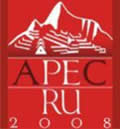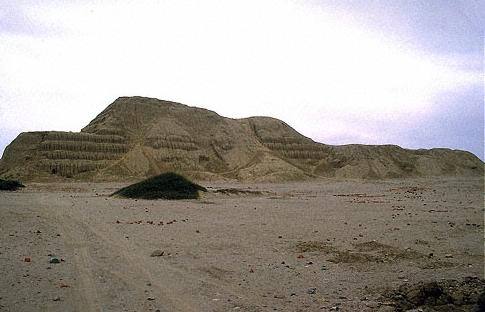United Kingdom
| Welcome |
| Peru in Brief |
| History |
| Geography |
| Government & Politics |
| Maritime delimitation between Peru and Chile |
| News |
Links |
THE MOCHE CULTURE |
||
|
||
| Two thousand years ago, while the Roman Empire was expanding its influence in Europe , the Moche people in Peru were developing a remarkable civilisation. The Moche lived along a 250-mile stretch of Peru northern coastline in a series of fertile valleys with rivers flowing from the Andes . Their civilisation flourished from about A.D 100 to 800. |
||
Each of the valleys contained large ceremonial centres with pyramids and palaces. The massive structure of the Pyramid of the Sun rose 13 feet above the Moche Valley and covered more than 12 acres, almost as large an area as that of the Great Pyramid at Giza in Egypt . It was the largest man made structure on the South American continent. |
||
Royal complexes such as this were surrounded by large settlements of up to 10,000 people. These high-density population centres were sustained by elaborate irrigation canals that channelled the mountain runoff and turned the dry desert valleys into rich agricultural land. |
||
The Moche people developed sophisticated artistic traditions in ceramics, metallurgy and textile production. Moche potters created hundreds of exceptional ceramic vessels. With remarkable skill, they produced pottery by making ceramics in molds. Artists painted some of the vessels with lively scenes of Moche life, and thus, although the Moche had no written language, their ceramics allow researchers today to learn about their complex culture. The painted scenes depict warfare, ritual sacrifice of prisoners and ceremonies involving a wealthy class of nobles. |
||
| In metallurgy, too, the Moche excelled. They fashioned sheets of precious metals into large ornaments and used lost-wax casting to create intricate pieces, some with movable parts. Skilled technicians created metal alloys using gold, silver and copper, and they developed a method of electroplating gold onto copper, many centuries before the discovery of electricity. |
||
Moche artists also created fine woven textiles, carved stone ornaments, inlaid bone and wood pieces. The sheer volume of elaborate artefacts created by the Moche indicates that there must have been a large corps of full-time, highly skilled artisans who were supported by a wealthy eliteclass. |
||
Recent archaeological discoveries, such as the royal tombs found near the village of Sipan , have shown that a few of these elite were astoundingly rich. They were surrounded with opulence supplied by a cadre of craft specialists, and when they died, they were buried with their incredible wealth. This created a need for the artisans to produce new luxury articles for the next rulers. The continuing demand for elite goods helped nurture the flourishing of arts and technology in the Moche society. |
||
The Moche civilisation collapsed near the end of the 8th century A.D., perhaps as a result of a series of natural disasters that occur periodically in the area - earthquakes, severe drought or heavy El Nino rains. |
||
By the time the Spaniards arrived in Peru in A.D. 1528, the Inca ruled the area where the Moche had once flourished. Hundreds of eroded pyramids and platforms rose above the desert valleys, mute testimony to a culture that once flourished with a genius that was never duplicated in pre-Columbian Peru . (Kay Sanger. Christine Sellin and Karen Mack of the Fowler Museum of Cultural History) |
||
| <BACK> |






 Pyramid of the Sun
Pyramid of the Sun